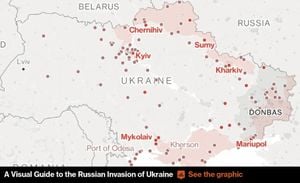Goldman Sachs has issued stark warnings about the potential economic fallout from the U.S. government's proposed oil tariffs, highlighting significant losses for foreign producers reliant on the American market. The investment bank said last Friday the proposed tariffs could cost foreign suppliers around $10 billion annually, particularly affecting Canadian and Latin American heavy oil producers.
President Donald Trump plans to impose a 25% tariff on Mexican crude oil and a 10% tariff on Canadian crude starting March, which is delayed from his initial proposal. This new series of tariffs targets producers who are heavily dependent on U.S. refiners, who remain their primary buyers due to limited alternatives.
According to Goldman Sachs’s analysis, the proposed tariffs could not only burden foreign oil producers but also the American consumers. The firm estimates U.S. households could see annual tariff costs of $22 billion, with the federal government reaping about $20 billion from the tariffs.
One key aspect of this situation is the price dynamics it could create. Goldman analysts suggest prices for light oil might need to rise by approximately 50 cents per barrel to make Middle Eastern crude more appealing to Asian refiners. This situation develops as Gulf Coast refiners prioritize domestic light oil over imported medium grades.
The situation is particularly pertinent for Canada, the largest oil exporter to the U.S., which is expected to sustain exports at 3.8 million barrels per day (bpd) through pipelines. To absorb the tariff's impact, Canadian producers would likely lower their prices, effectively discounting their oil to maintain market competitiveness.
Similar dynamics are anticipated for the 1.2 million bpd of seaborne heavy crude imports from Canada and Latin America, including Venezuela and Mexico. Analysts noted these oil types would see price adjustments to offset tariff impacts, ensuring continued flows of crude oil to the United States.
Goldman Sachs pointed out the contradictions within the proposed tariff measures. The firm's analysts foresee U.S. refining capabilities keeping American refiners competitive, which means they will remain the primary destination for heavy crude oil because of advanced processing technologies and cost efficiencies. The conclusion here is clear: foreign producers, particularly from Canada and Latin America, must adapt quickly to these newly proposed tariffs.
While the disruptions made by these tariffs could reshuffle global trade patterns, Goldman insists Canadian producers are likely facing significant challenges and could be labeled as "captured sellers." This term denotes their limited options for alternative buyers who could potentially alleviate some pressure from these tariffs.
The broader geopolitical and economic ramifications of these tariffs extend beyond oil. Trump's administration has adopted aggressive trade policies, which include proposed tariffs on auto imports, and scrutiny of digital service taxes imposed on U.S. tech giants abroad. All these moves aim to rectify perceived imbalances with other nations.
The initial surprise and concern surrounding these tariffs were sufficiently strong to have immediate effects on the stock market. Recent polling shows noticeable trepidation among market participants; around 59% of respondents believe Trump's tariffs could negatively impact stock performance. This sentiment appears to have been reflected on Wall Street, where major indices recorded significant losses as investors reacted to tightening trade measures.
This combination of tariff proposals and their expected impacts may yield complex economic conditions not just for the producers affected, but also for consumers and market analysts within the U.S. and globally. The stakes for both foreign producers and U.S. consumers couldn't be higher, and the anticipated adjustment measures hint at potentially turbulent times on the horizon.
Despite the tensions these tariffs have created, the U.S. is likely to remain the key buyer of foreign heavy crude due to its refinement capacity and competitive pricing structure. Should these tariffs proceed, it will be interesting to observe how they shape trade relations and market dynamics moving forward.



